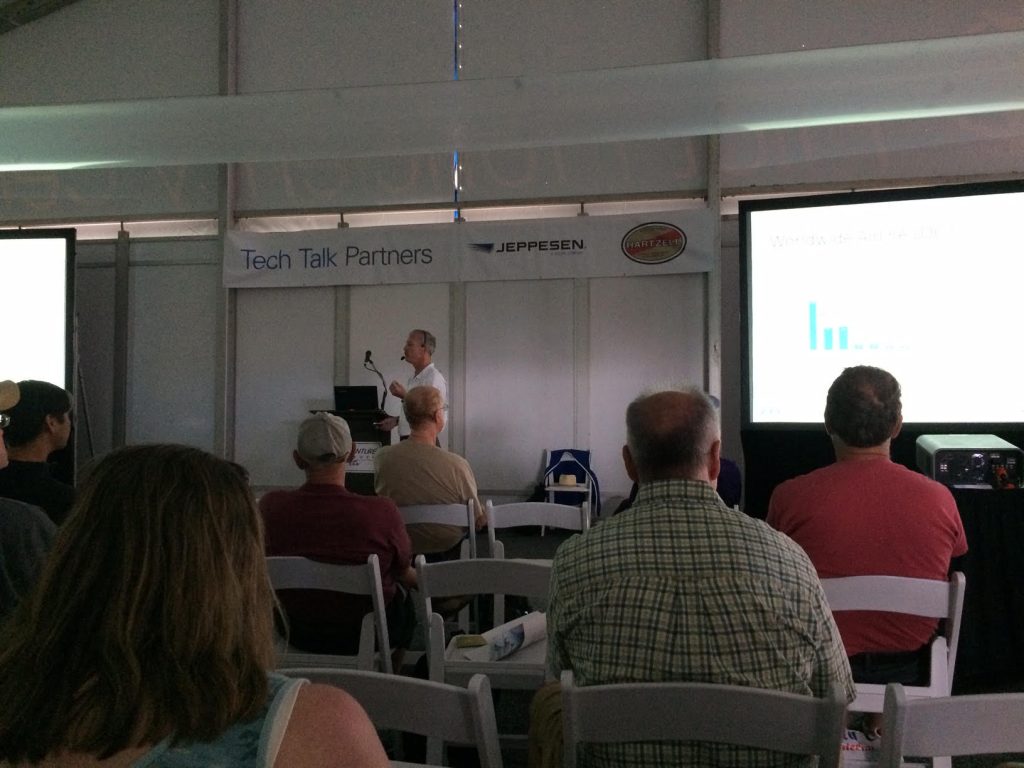
Everyone who has seen the musical film “The Wizard of Oz” is familiar with the concept of a strange and remarkable place far from Kansas known as The Land of Oz. For pilots and aviation enthusiasts there is also a very special place unlike any ordinary airport, where amazing and magical things are on display everywhere you turn. If we identify this place by its airport identifier, OSH – for Oshkosh, Wisconsin, it is the Land of OSH, the location for the Experimental Aircraft Association (EAA) annual convention known as AirVenture.
Along with the vast array of homebuilt, military, and vintage aircraft, are forums for education on various subjects from aircraft building skills to speakers addressing every aspect of aviation history. With such a large concentration of pilots (over 10,000 aircraft regularly convene at the event), it is a great place for pilots to learn and grow their knowledge and skills. The EAA Pilot Proficiency Center is dedicated to improving pilot skills and enhancing safety, so it was no surprise when APS got a call asking for someone to speak on the most important issue confronting pilot safety: Loss of Control In-flight (LOC-I). APS Vice President of Training and Business Development, Randall Brooks, was already scheduled to attend, so this was a perfect opportunity for him to speak on the threat of loss of control in-flight, and the training in upset prevention and recovery (UPRT) needed to overcome it.
The question was how to approach the subject in a way that could reach an audience with a wide variety of experience and knowledge levels from every segment of aviation. The sad truth is that, regardless of pilots’ backgrounds or where they are in the spectrum of flight experience, there is critical information regarding the LOC-I threat that is missing from normal civil licensing standards. The presentation that Randall delivered shared as much of that as was possible in the available time, and at a technical level that could benefit the broad and varied audience, from student pilots to airline captains.
To begin with, most pilots are not aware of significant threat LOC-I presents compared to other possible threats. If you ask them what they believe poses the greatest threat to them in their flying they are likely to identify an engine failure, a mid-air collision or a weather-related event as presenting the greatest danger. However, using data collected by Boeing, the Commercial Aviation Safety Team, the FAA, and the NTSB, Brooks clearly illustrated that LOC-I in flight is far and away the greatest cause of fatalities in every sector of aviation.
The reasons for this are many, from a lack of understanding that flight simulation alone cannot fully prepare pilots for the human factors effects encountered in an unexpected airplane upset to the mistaken belief that required licensing skills alone will be sufficient to correct an airplane that has departed the limits of the normal flight envelope.
Brooks explained the aerodynamic underpinnings for the most common aspects of LOC-I, but most importantly conveyed that, as helpful as information can be, only practice in the presence of a trained UPRT instructor can provide the practical experience required to reduce the threat of LOC-I for pilots and their passengers.
Much of the information shared was new to those in attendance who included student pilots and their instructors as well as professional pilots and fellow UPRT instructors such as Brooks. Many follow-on questions and discussions followed Brooks’ presentation, which culminated with his explanation that the International Civil Aviation Organization has made recommendations to change the way Commercial pilots are trained at the licensing level in the future through the inclusion of comprehensive UPRT in appropriate aircraft by competently trained and qualified instructors.
Aviation is magical in all its different forms, and by making it safer through proper UPRT we can ensure that, like Dorothy, everyone gets home safely.




Comments: